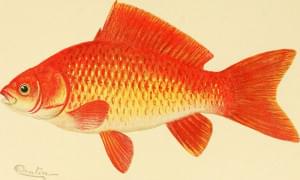
The Internet of Things is the buzzword of the tech industry. But it’s also an undeniable reality. The IoT has already triggered the fourth industrial revolution and will inevitably become part of our lives whether we like it or not. IoT has already found its way into a huge number of industries, and more and more companies are focused on grabbing a piece of the IoT pie.
The problem is, many companies delve into the IoT development without assessing or knowing about the key challenges that lie in their path. Many of these companies don’t even have a background in IT and software development, and are for the most part focused on delivering an internet-connected device that will keep them in line with the competition. Even those who do have experience in software and hardware design tend to view IoT in the same light as traditional computing and make terrible mistakes in their development.
As has been proven time and again, such an approach is a recipe for disaster and will only turn out to become a self-defeating goal that will lay waste to the manufacturer’s efforts and undermine IoT as a whole.
Here are four challenges every manufacturer and developer should consider when deciding to enter the IoT business.
Connectivity
The first thing to consider is how your device will connect to the internet and your cloud platform. This will depend largely on the environment in which the device will be used, and the kind of communication infrastructure that will be available to it.
For instance, if you’re creating a smart home device (such as a connected toaster) you’ll probably have access to a Wi-Fi home router or a ZigBee/Z-Wave IoT router, so your device will have to be able to support one or more of those transport mediums. However, in some settings — such as agricultural IoT or smart cars — there’s no access to Wi-Fi networks, and cellular networks might be your only possible connection.
You have to weigh your options and make design decisions based on the possibilities and tradeoffs that each provide. For instance, since transferring data to the cloud over cellular networks can be costly, you might decide to opt for more functionality on the edge or the use of the blockchain model in order to create IoT ecosystems that are less dependent on the cloud.
You also need to consider that IoT is a technology that’s still in its early stages and is undergoing a lot of changes and transformation. There are too many moving parts and competing trends. Many of the technologies that are being used today might become obsolete in the future.
Meanwhile, as opposed to computers and smartphones, which are replaced every few years, IoT devices are meant to have long lifespans. For instance, a smart-fridge must at least work for 5–10 years. Therefore, you must have a plan to make sure your devices will keep their connectivity as the future of IoT takes shape and new technologies replace old ones. I’ve discussed this issue in detail here.
Security and Privacy
IoT Security has always been an issue of contention. A first challenge that needs to be considered is that IoT security and privacy are fundamentally different from what we’ve come to know about cybersecurity. Here are the key security design points you need to take care of:
- Physical security: IoT devices are often left in the open, unattended and with no physical protection. You have to make sure they’re immune to tampering by malicious parties and can’t be hacked and manipulated with a flat-head screwdriver. You also have to protect any form of data that’s stored on the device. While it might be too expensive to embed a secure enclave in every IoT device, yet encrypting on-device data is important.
- Data exchange security: Securing data as it’s being transferred from IoT sensors and devices to gateways and from there to the cloud is also important. This will require the use of encrypted transfer protocols, but IoT security is more than just encryption, and should also take into account authentication and authorization.
- Cloud storage security: The data that’s being stored in the cloud is just as vulnerable as the rest of the IoT ecosystem. Your platform should be able to protect the data that it stores in the cloud, which should include proper encryption and access control.
- Updates: No matter how much you harden your product’s code and hardware for security flaws, vulnerabilities will eventually surface. Under such circumstances, you first need to have a plan to fix bugs and roll out patches quickly (not leaving bugs unfixed for five years). Secondly, you need to be able to provide your customers with the bug fixes in an intuitive and secure manner. Over the air (OTA) updates are a popular mechanism to update connected devices, though you have to make sure they don’t become a security hole themselves.
In terms of privacy, you should take into consideration that much of the data collected by IoT devices is subject to laws and regulations. For instance, fitness trackers collect a wealth of health information about users, which (in the United States) is protected under the HIPAA (Health Insurance Portability and Accountability act). This means that if you store that kind of information on your cloud servers, you have to make sure it conforms to the legal requirements.
As a rule of thumb, you’re better off anonymizing customer data and avoiding the storage of personally identifiable information (PII) in the cloud. It will ensure that you don’t incur legal penalties in case of mishaps.
Flexibility and Compatibility
As the IoT landscape is constantly shifting, you’ll want to make sure your product will be able to support future tech. This is something that needs to be ingrained in the design of your product with the right balance of software and hardware.
Creating specialized hardware for your device will give you optimal performance, but will probably limit you in terms of rolling out updates and new features. On the other hand, choosing the right amount of storage and compute resources, and an IoT-tailored operating system such as Linux, Brillo or Windows IoT, might incur a performance penalty but will give you the flexibility to expand your device’s capabilities with new features and patches.
Some manufacturers go as far as allowing developers to add to the functionality of their IoT devices by providing them with the right set of APIs and SDKs. A perfect example in this regard is the Amazon Echo, the IoT gadget that can be extended and programmed in a thousand different directions.
Compatibility is also an issue that needs to be taken care of when designing IoT products. It’s important that your IoT device be able to blend in with the rest of the user’s IoT ecosystem seamlessly, without adding complexity or frustration to the experience. This accounts for both software and hardware. Preferably, consumers should not be forced to install a new app for every new smart device they add to their homes. The Apple HomeKit and Samsung SmartThings are two examples of platforms that allow developers to offer users new IoT functionality in a familiar environment.
Data Collection and Processing
Security and privacy concerns aside, you have to have a plan for how you’re going to deal with all the data you collect. First of all, you have to make an assessment of how much data will be produced and collected in order to be able to scale your cloud storage to the needs of your platform.
But even more important than that is how you process the data you collect. IoT data is worth its weight in gold, but not if it rests in your servers and gathers dust. You have to forecast the skills and tools required to be able to put your data to good use. This includes hiring data scientists and employing the right analytics and machine learning tools to glean actionable insights from your data.
IoT data can accomplish a wide range of useful functions, including the following:
- Complementing your existing data: Most companies already have a wealth of data about their customers before they move to the IoT business. Combining this data with what IoT devices are gathering can unlock new business insights and revenue opportunities.
- Profiling and segmenting users: Data collected from IoT devices can tell a lot about customer preferences and characteristics. Analyzing and categorizing IoT data can help companies better understand the needs and preferences of their customers and address them in a smarter fashion.
- Finding opportunities for enhancing products: The correct analysis of IoT data can help understand what’s not working with the product and what features need to be fixed for efficiency and ease of use, and what features are missing and should be added to future products and software updates.
Bottom Line
There are many challenges involved in developing an IoT product. Some of the more prominent have been listed above. Not taking these challenges into account can be the equivalent of entering a dark tunnel without a torch, where you have to feel your way forward and hope against hope that you don’t step into a trap. The list of IoT development challenges can be much more intricate and comprehensive. If you think other items can be added to the list, please share with us in the comments section.
Frequently Asked Questions (FAQs) about Creating an IoT Device
What are the main challenges in designing an IoT device?
Designing an IoT device comes with several challenges. The first is the issue of connectivity. IoT devices need to be connected to the internet at all times, which can be a problem in areas with poor internet connectivity. The second challenge is power consumption. IoT devices are often small and portable, which means they need to be energy-efficient. The third challenge is security. IoT devices are vulnerable to hacking, which can lead to data breaches. Lastly, there’s the challenge of interoperability. IoT devices need to be able to communicate with other devices and systems, which can be difficult due to the lack of standardization in the IoT industry.
How can I ensure the security of my IoT device?
Ensuring the security of an IoT device involves several steps. First, you need to encrypt all data that is transmitted from the device. This will prevent hackers from intercepting and reading the data. Second, you need to regularly update the device’s software to fix any security vulnerabilities. Third, you should use strong authentication methods to prevent unauthorized access to the device. Lastly, you should educate users about the importance of security and provide them with guidelines on how to use the device safely.
What is the importance of interoperability in IoT devices?
Interoperability is crucial in IoT devices because it allows them to communicate with other devices and systems. This is important for creating a seamless user experience. For example, if you have a smart home system, you would want all your devices – from your lights to your thermostat – to be able to communicate with each other. Without interoperability, this would not be possible. Therefore, when designing an IoT device, you should ensure that it uses standard protocols and interfaces that are compatible with other devices.
How can I make my IoT device energy-efficient?
Making an IoT device energy-efficient involves optimizing its hardware and software. On the hardware side, you should use components that consume less power. On the software side, you should design algorithms that are efficient and do not waste computational resources. Additionally, you can use power management techniques such as sleep modes to conserve energy when the device is not in use.
What are some examples of successful IoT device designs?
There are many examples of successful IoT device designs. For instance, the Nest Learning Thermostat is a smart thermostat that learns your schedule and adjusts the temperature accordingly, saving energy. The Amazon Echo is a smart speaker that uses voice recognition to perform tasks such as playing music or answering questions. The Fitbit is a wearable device that tracks your physical activity and provides insights into your health. These devices are successful because they solve real-world problems, are easy to use, and provide value to the user.
How can I ensure the connectivity of my IoT device?
Ensuring the connectivity of an IoT device involves choosing the right communication protocol and having a reliable internet connection. The communication protocol should be suitable for the device’s needs. For example, if the device needs to transmit large amounts of data, you should use a protocol that supports high data rates. If the device is battery-powered and needs to conserve energy, you should use a protocol that is energy-efficient. As for the internet connection, you should ensure that the device is within range of a Wi-Fi network or has a cellular connection.
What are the future trends in IoT device design?
Future trends in IoT device design include the use of artificial intelligence (AI) and machine learning, increased focus on security, and the development of energy-efficient devices. AI and machine learning can be used to analyze data from IoT devices and make predictions or decisions. Security will continue to be a major concern due to the increasing number of IoT devices and the sensitive data they handle. Lastly, as the demand for portable and wearable IoT devices grows, there will be a greater need for energy-efficient designs.
How can I test the performance of my IoT device?
Testing the performance of an IoT device involves measuring its speed, reliability, and power consumption. You can use benchmarking tools to measure the device’s speed and reliability. To measure power consumption, you can use a power meter or monitor the device’s battery life. Additionally, you should test the device in different environments and conditions to ensure that it performs well under all circumstances.
How can I improve the user experience of my IoT device?
Improving the user experience of an IoT device involves making it easy to use, reliable, and useful. The device should have a simple and intuitive interface. It should be reliable and perform its functions without errors or delays. Lastly, it should provide value to the user by solving a problem or making their life easier. You can gather feedback from users to identify areas for improvement.
What are the ethical considerations in designing an IoT device?
Ethical considerations in designing an IoT device include privacy, security, and sustainability. You should respect the user’s privacy by only collecting necessary data and keeping it secure. You should ensure the device’s security to protect the user’s data and prevent unauthorized access. Lastly, you should consider the device’s environmental impact and strive to make it as sustainable as possible.
 Ben Dickson
Ben DicksonBen Dickson is a software engineer at Comelite IT Solutions. He writes about technology, business and politics across the web and on his Tech Talks blog.




